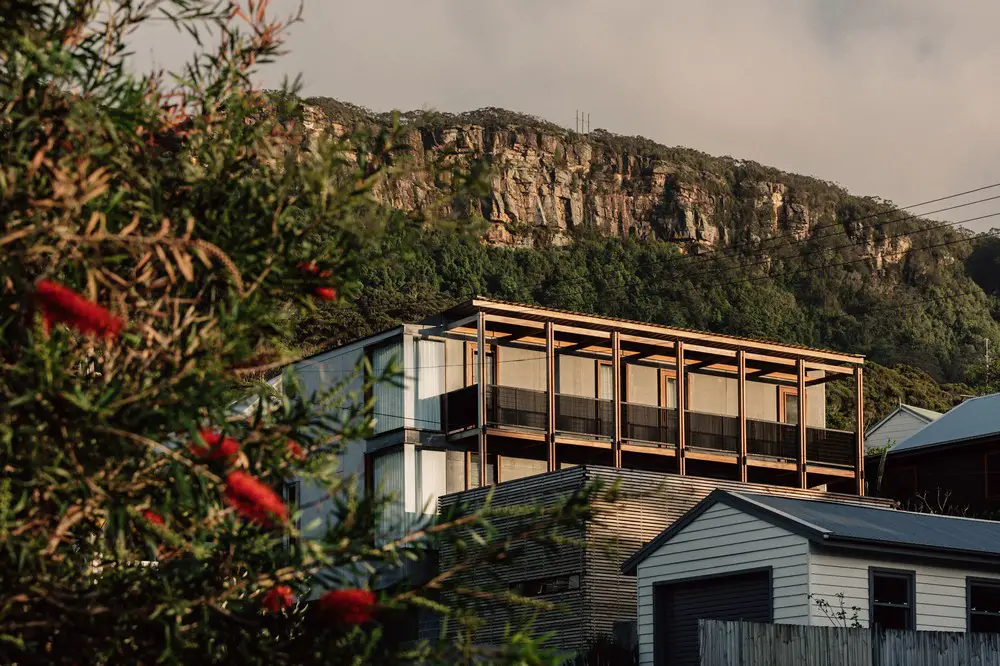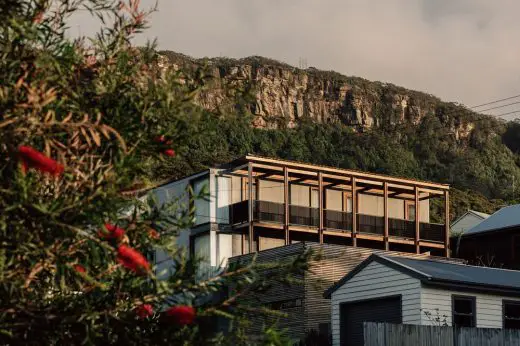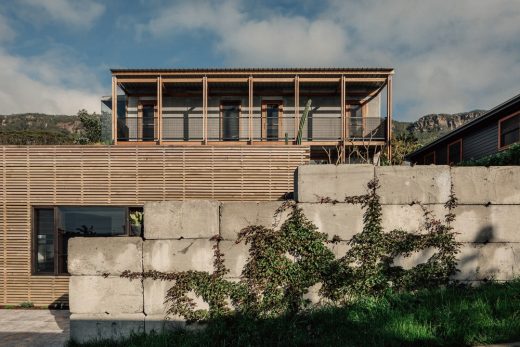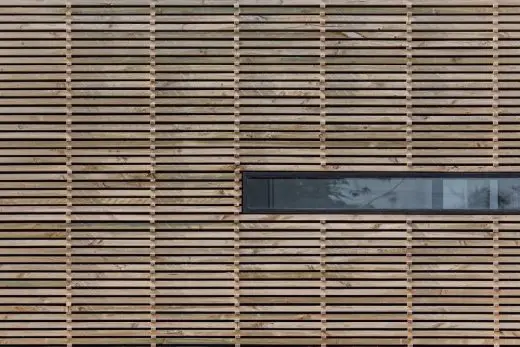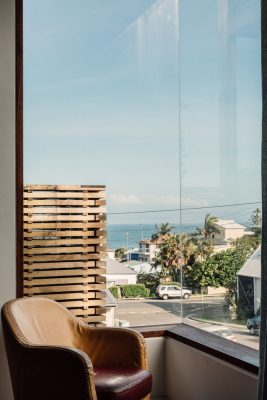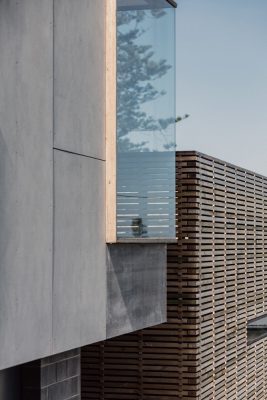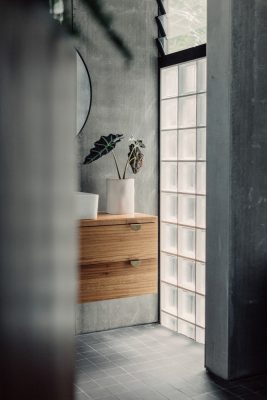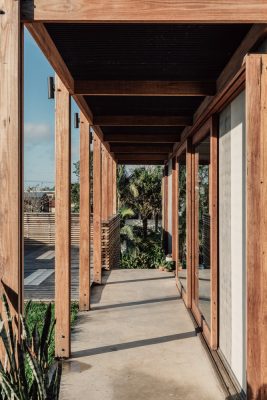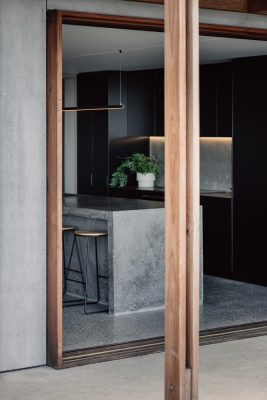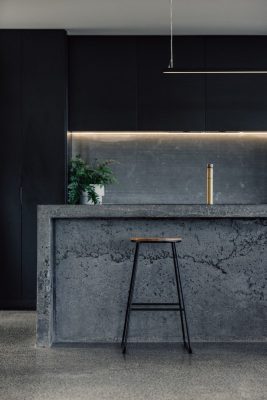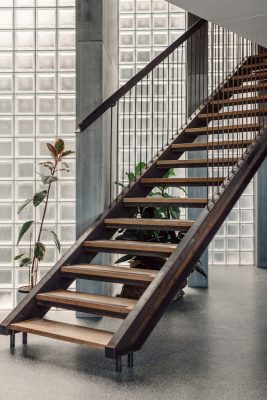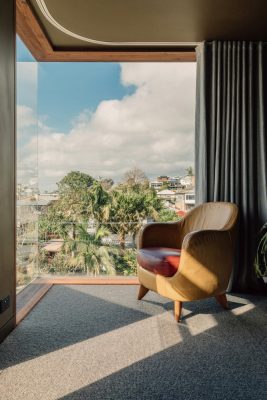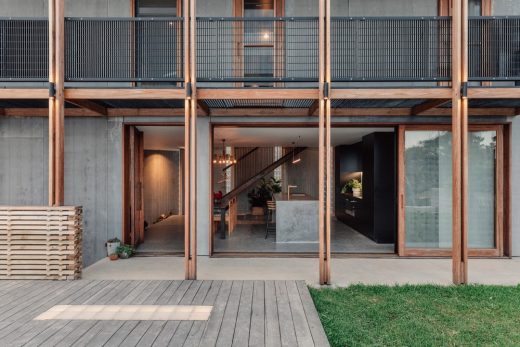Blade House in Coledale, NSW Coastal Residence, Australian Holiday Home, Architecture Images
Blade House in Coledale, NSW
Sustainable Sea View Australian Real Estate, New South Wales House – design by Takt Studio
29 Oct 2019
Blade House, New South Wales
Architects: Takt Studio
Location: Coledale, NSW, Australia
Coledale, located between the Illawarra Escarpment and the Pacific Ocean, is an area undergoing gentle transformation, where miner’s cottages jostle with more recent homes. The brief for Blade House asked to accommodate a creative family of four and to provide a smaller second dwelling to share the wonderful locale with extended family, friends and guests.
This project is built on a constrained corner block, where a steep south facing slope, ocean views and solar access are all at odds with one another.
In response, and drawing from the geological strata on this coastline, a new raised ground plane and elevated deck was developed, providing refuge and prospect for the occupants. Below this, the garage, storage areas and a second, smaller dwelling on the street corner are accommodated. Atop, sits the larger volume of the main house, running North – South, creating a courtyard with its eastern aspect toward the Tasman Sea.
Ascent to the elevated podium, via a concrete stair under the transparent balcony, is similar to nearby ascents up the escarpment through the canopy of the rainforest. This platform invites landscape in and welcomes community; for the morning surf check, a casual wave to neighbours and sunset drinks. Afternoons are spent in the corner windows, reading and watching the sea. Friends drop in. Gathering here is relaxed. Robust materials accept sandy feet and children playing.
The West facade is composed of strong vertical blades, cranked to the North to collect sun and protect from afternoon heat, while the East facade guides views, and filters light through a transparent, planted verandah forming a close connection to changing light throughout the day.
The project demonstrates how a dual occupancy development can relate intimately to its street and landscape location, while providing amenity and privacy for both dwellings. From the street, the second, smaller dwelling, called the Jenga House due to its stacked timber facade, is articulated as separate volume from the home, to break down scale, and to enable it to stand with its own personality. Those stacked timber walls recall drying stacks in local timber yards, and erosion in nearby ocean cliffs. Their materiality is driven by an exploration of cheaper rough-sawn pine as external layer.
The main house and its layers of enclosure in hardwood relate to the tall forests and craggy cliffs of its escarpment backdrop, while its shell is sheeted in ubiquitous FC cladding. Materiality is influenced by both the landscape and the traditional local beach houses.
A team of local makers enabled the exploration of materiality and detail specific to its particular environment and the owners, while the client was also a major contributor. In imagining the project, but also in taking on large parts of the building works they had a huge influence on the outcome.
Detailing is direct and simple; and material choices prefer the least expensive possible for the required performance. Basic construction materials were used as finished products – such as pine stacked timber walls and recycled concrete landscaping walls.
The project utilises solar passive design principles in a unique way and seeks to maximise green space on a very tight site. Vertical facades and boundary walls are designed to support climbing plants over time. Natural lighting throughout, and adaptable openings ensure cross ventilation when needed and a reduced energy footprint. Elements such as recycled concrete blocks made of waste from the concrete plant as boundary walls further reduce footprint.
Under the escarpment, close to the sea, this new home and secondary dwelling explores landscape, light and a sense of community.
Sustainability Statement
The project utilises solar passive design principles in a unique way and seeks to maximise green space on a very tight site. Vertical facades and boundary walls are designed to support climbers.
Materials were chosen to reflect and connect to the landscape and the simple nature of traditional beach houses. Concrete, clear sealed FC cladding, steel from the local mill and recycled hardwood double glazed windows + doors forming the building envelope.
The use of local suppliers and custom objects by local craftspeople reduces the embedded energy in the production of building materials and products. Elements such as recycled concrete blocks made of waste from the concrete plant as boundary walls further reduce footprint.
Natural daylighting throughout, and adaptable openings ensure cross ventilation when needed and a reduced energy footprint. The dual occupancy enables makes use of shared water collection.
Blade House, NSW – Building Information
Architects Practice: Takt Studio
Project Team Builder: Owner Builder + Andrew Staig
Structural Engineering: Northrop
Windows + Doors: AHJ
Joinery: Forest Furniture + Paiano Custom Kitchen
Photography: Shantanu Starick
About Takt Studio:
TAKT is a small architecture practice who bring a variety of backgrounds and experience to any project. While a large proportion of the practice’s work is of residential nature, TAKT has worked on a number of community projects including a school building over the past 10 years.
TAKT was founded by Brent Dunn and Katharina Hendel and was built on previous architectural experience in Australia, Indonesia, Germany, the Netherlands and the Czech Republic. Over the past years it has developed into a collaboration between a group of passionate and skilled individuals who work from a selfbuilt studio, looking out through the trees to the coal coast, south of Sydney.
The studio was formed to create meaningful buildings. Buildings that enhance lives. Buildings that age gracefully. Buildings that explore the possibilities of site, light, sustainability, material and desire.
All TAKT projects are based on a thorough analysis of the site. Due to this process TAKT have developed an intimate understanding of, and passion for, the local area, its variety of site conditions, particularities, cultural and social background and peculiarities.
The practice’s interest in the detail and craft of building has developed into a greater involvement in the construction process with the whole team getting on site at times and working on the development of additional studio buildings. Brent and Katharina are also part of a construction company that delivers modular studio buildings as design build projects.
Blade House in Coledale, NSW images / information received 291019
Location: Coledale, South Coast, New South Wales, Australia
New Sydney Architecture
Contemporary Sydney Property
Sydney Architectural Designs – chronological list
Architecture Walking Tours in Sydney by e-architect
Bellevue Hill House
Architecture: Geoform Design Architects
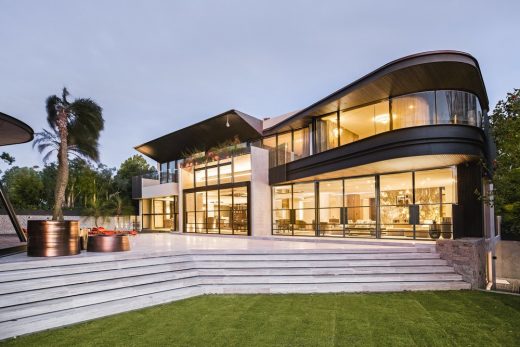
photograph : Kate Stanley
Bellevue Hill House
Design: SAOTA and TKD Architects
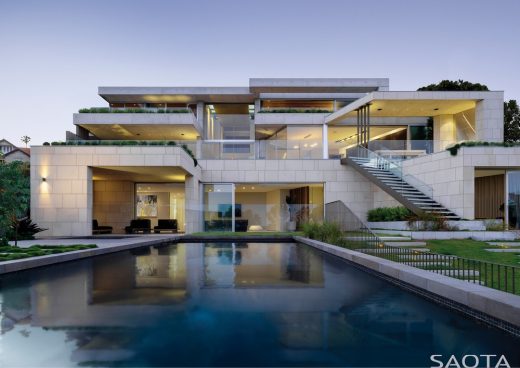
photograph : Justin Alexander
Mosman House
Architecture in Australia
Architects: anthrosite
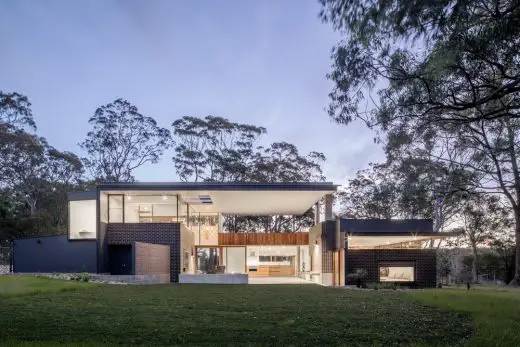
photo : Jon Reid
Contemporary House in Newcastle, NSW
Australian Architect Offices : Studio Listings
Comments for the Blade House in Coledale, NSW page welcome
Website: NSW

